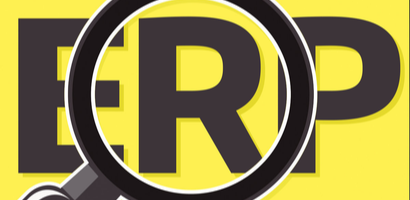
•
Why is ERP Software Popular Again?
If you have spent any time online in the past two years, you are starting to see a solid trend emerging: the clear resurgence of ERP applications, especially around Calgary. Unlike 20 years ago when a number of still popular ERP software suits made their way into billion dollar businesses, this time the target audience is the SMB market. Everyone seems to want in on the action. Whether you are a restaurant, an ice cream shop, or a car rental place, you need software to manage you proprietary business. So what has changed since the 1990s?
Let’s look at a few important factors that resulted in a renewed popularity in the ERP space:
The Cloud is a real thing now
Maybe you’ve heard? Everyone is moving everything into the cloud. Records, documents, email, even SCADA. I know, it seems almost crazy. The bottom line is actually the bottom line: the cloud saves you money. This is why businesses are moving their properties in droves. That’s mostly because it’s now affordable and relatively easy to get there. The systems are stable, highly available and relatively well managed.
There is an App for Everything!
The reality is that there is so much business software out there today that no matter what kind of business you run, there is bound to be something out there that fits your business management needs. You will find software that an ice cream parlor can use to manage flavors, their little accounting books, shifts and such. And the same goes for the car repair shop.
The SaaS model is well established
SAAS, otherwise affectionately known as “Software As a Service” is sales approach that software vendors used to sell their ERP software. Microsoft Office 365, Dynamics 365 and SharePoint Online are great examples of this model, for many reasons:
- You no longer need to worry about buying license keys and keeping them hidden in a safe place for when you re-download and re-install the software. You just get an invoice for use, similar to your utility bill.
- Upgrades, patches, and various hotfixes are now handled for you.
- No need to dedicate servers or physical boxes, which in turn causes you to hire infrastructure specialists to keep those heaters running.
- No need to worry about backups, high availability, regional coverage–all this is done for you. Or at least, you hope it is.
- If you suddenly find a better vendor, you drop the previous one and the relationship is done. You might get a few annoying retention calls, but that’s about as painful as it will be to change providers.
Customers demand lower prices
Remember back in the day when the internet came, and you got your first giant beige PC with six 5.25″ slots, a shiny new US Robotics 2400 modem and a 14″ SVGA monitor for just under $3K from Radio Shack. After 2 hours with tech support, you finally got online, only to ask yourself: what now? Then you realized that you can go to WebCrawler, type in “Tiger” and marvel at maybe a dozen or so pictures of the animal. Yup, the experience is not much different today. Except you are standing in Canadian Tire with a iPhone in your hand “Googling” the price of the snow shovel that you’ve been neglecting to get. You realize that Home Depot has them for $5 cheaper.
This buying tactic is now standard fare. If you still think customers care about merchandising, quality of store interior, availability of merchandise and even quality of merchandise, you must wonder why Costco and Superstore are killing it. Ultimately, this puts pressure on both giant and tiny business to bring their costs down. Most of the time that means letting people go and automating many tasks with computers! This is where ERP software helps to bring your efficiency up by automating many tasks that used to be done by a person with a notebook or even Excel. ERP software will bring down the cost of doing business, but only if it performs.
Constantly needing to target your customers
When I used to think of ERP, I thought of ledgers, invoicing, shipping and human capital costs. Many pivot tables that show you grueling reports that you pour over to try and understand your business a little bit better. “Oh it seems that yellow bicycles are constantly sold out, and we constantly overstock 10 of the red ones.” Freeze that. That’s you, in the back of the bicycle shop realizing that you need to make a change. You realized this based on statistics resulting from keeping good sales and inventory records. But do you see the gap here? The part about “pouring over” is not a joke. That’s our problem today, even here at REFINECO. We have so much data on everything that it’s impossible to make sense of it. Sure, we also have reports, but they too take time to digest.
Enter BI or Business Intelligence. This is another area that has immensely matured and no ERP suite is complete without one. The basic idea behind this BI concept is that you list your top KPIs, then work backwards to identify the indicators and eventually pin the reports that produce them. That whole process results in a series of specialized dashboards that tell you how you are doing and what changes you need to make. These days BI is often the difference between a successful vendor and one that is struggling. Do you think that Indigo decided to intentionally sell toys and coffee because it was a really good idea? Really, toys and books? Why not vegetables or even tires? Companies like Indigo have been using BI for the better part of a decade to carefully target their merchandise at the people who want it most.
ERP is getting easier
Lastly, with the advent of popular UX design standards emerging from the likes of Google and Apple, the software is slowly becoming easier to use. Everyone is figuring out that making things look like a spreadsheet stretched over an airplane cockpit is simply a joke. Companies are striving to make their ERP software look fresh, clean and easy to use, and most importantly fit-for-purpose. A clean and well organized UI that limits the number of clicks and mixes a good blend of dashboards, form entry and analytics into every interaction, is the one that a not-so-computer-savvy business owner will select to aid in running his company.


